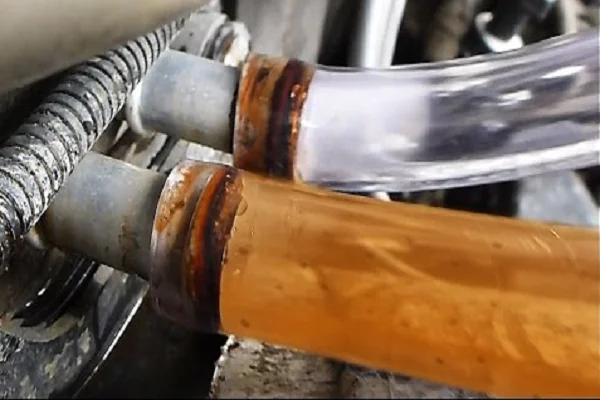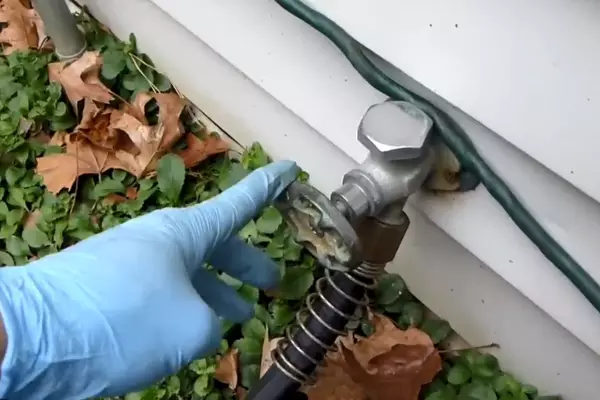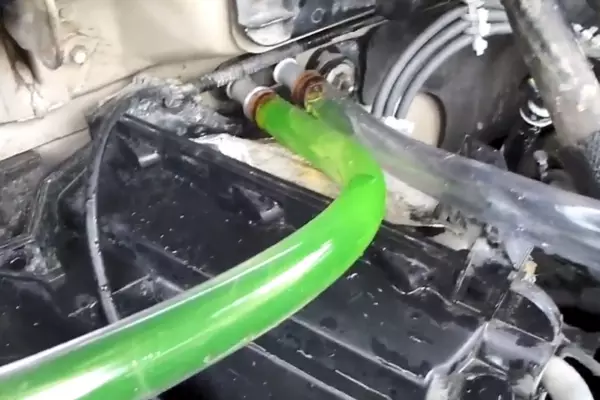A car’s heater core is a critical component, akin to a smaller radiator, playing a key role in maintaining a comfortable temperature inside the vehicle. However, like any machine, it requires regular upkeep for optimum performance. Without maintenance, debris and coolant deposits can accumulate, clogging the heater core and impairing its efficiency.
Flushing a heater core helps restore its functionality by clearing out the build-up. However, not everyone has access to a water hose, the commonly suggested tool for the task. But that’s no reason for concern, as there’s an equally effective way of accomplishing this using compressed air.
Regularly flushing your heater core without a water hose can improve heat circulation, minimize potential damage, and lengthen the core’s life span. An efficient heater core significantly contributes to the overall performance and longevity of your vehicle.

Contents
Why Flush Heater Core?
Efficiency and Performance
A heater core is integral to your vehicle’s heating system. It contributes to defrosting and heating the interior. A clogged heater core hampers this process, resulting in poor heat circulation. Regular flushing enhances the core’s performance and maintains the vehicle’s efficiency.
Prevention of Damage
Accumulation of debris and coolant can cause internal corrosion and damage to the heater core. By flushing it regularly, you minimize the risk of damage and expensive repairs or replacements.
Extended Lifespan
Proper maintenance, including flushing the heater core, prolongs the life of your vehicle’s heating system. It ensures the heater core functions at its peak for a longer period, thereby adding to the vehicle’s longevity.
Symptoms of a Clogged Heater Core
Inconsistent Heat Output
A significant drop in heat output or inconsistent heating can signify a clogged heater core. If you find the heating system not warming up the car adequately, consider checking the heater core.
Unusual Smells
A sweet, syrupy smell could be a sign of coolant leaks, often related to a clogged or damaged heater core. If you notice this scent in your car, it’s time to inspect the heater core.
Visibility Issues
If your car’s windows fog up frequently without any apparent reason, it might be due to a malfunctioning heater core. It’s a sign that the system is not effectively managing moisture inside the vehicle.

Required Tools and Materials
You’ll need the following items to flush a heater core without a water hose:
- Compressed air source
- Drain pan
- Gloves
- Safety goggles
- Coolant
- Pliers
- Wrench
Ensure to maintain a safe working environment. Wear safety goggles and gloves throughout the process to protect against potential splashes of coolant.
Flushing Process Without a Water Hose
Flushing your heater core without a water hose can be accomplished by employing alternative methods. One of the most efficient and effective approaches involves the use of compressed air. Here is a step-by-step guide:
Preparation Steps
To start the flushing process, ensure that you have prepared your workspace adequately. Gather all necessary tools and materials, and don a pair of protective gloves and safety goggles. Position a drain pan directly under the heater core. This is crucial as the process involves draining coolant, which can be hazardous if not managed correctly.
Locating the Heater Core
Your vehicle’s heater core is usually found beneath the dashboard on the passenger side. However, its location may vary based on the make and model of your vehicle. You can refer to your vehicle’s user manual for the exact location and visual diagram. The heater core appears similar to a mini radiator, complete with inlet and outlet pipes. Once identified, it’s time to move onto the next step.
Detaching Heater Hoses
Heater hoses are the link between your engine and the heater core. To flush the heater core, you need to remove these hoses. Using a pair of pliers or a wrench, gently disconnect the heater hoses from the heater core, taking care not to cause damage. Some coolant may drain out during this step, which is why the drain pan is essential.
Using Compressed Air
Now, it’s time to flush the heater core. Connect your source of compressed air to one end of the heater core, ensuring a tight fit. Gradually apply air pressure, starting low and slowly increasing if needed. This process helps dislodge and push out any debris or coolant deposits that have built up inside the heater core. Remember not to use too much air pressure as it could damage the delicate fins inside the core.
Antifreeze Replacement
After you have successfully flushed the heater core, the final step is to replace the old coolant with new antifreeze. Carefully pour the new coolant into the heater core until it reaches the recommended level. It’s advisable to use a funnel to prevent spillage.

Safety Precautions During Flushing
Undertaking a heater core flush involves dealing with potentially harmful substances and tools. Following safety guidelines will ensure a smooth, accident-free process.
Personal Safety Measures
Prioritize your safety by wearing protective gear throughout the process. This includes gloves to protect your hands from burns or cuts and safety goggles to shield your eyes from accidental splashes of coolant. In addition, make sure you’re working in a well-ventilated area, as coolant fumes can be harmful if inhaled.
Equipment Safety Guidelines
Handle your equipment with care to avoid causing any damage to your vehicle. When detaching the heater hoses or applying compressed air, use gentle movements to prevent any tears or breakage. In the same vein, when refilling the coolant, do so slowly to avoid overfilling or spilling.
Post-Flushing Clean Up
After flushing your heater core, it’s essential to clean up responsibly. Dispose of the old coolant in a sealed container and take it to a local recycling center. It is illegal and harmful to the environment to dispose of coolant in drains or on the ground.
Common Mistakes to Avoid
Even though flushing your heater core is straightforward, there are common errors that can hinder the process or lead to additional issues.
Incorrect Tool Use
Choosing the wrong tool or misusing the correct one can lead to unnecessary damage. Always ensure that you’re using the appropriate tool for each task. For example, use pliers or a wrench to remove the heater hoses, not a screwdriver or any other sharp object.
Insufficient Safety Preparations
Failing to take the right safety precautions can lead to accidents and injuries. Make sure you’re wearing protective gear, and you’ve correctly positioned the drain pan before starting the process.
Poor Antifreeze Handling
Mishandling antifreeze can lead to spills or overfilling, which can damage your vehicle or the environment. Always use a funnel when refilling the coolant, and ensure the level is within the manufacturer’s recommended range.
After Flashing: Next Steps
Once you’ve completed the flushing process, there are additional steps to ensure everything is in order.
Reattaching Heater Hoses
After you’ve flushed and refilled the heater core, it’s time to reconnect the heater hoses. Make sure they’re securely attached to prevent any leaks or disconnection while the vehicle is in operation.
Testing the Heater Core
To confirm that the flush was successful, test your vehicle’s heating system. If it warms up quickly and maintains a steady temperature, your flush was successful. However, if the heating remains weak or non-existent, you may need to revisit the flushing process or seek professional assistance.
Regular Maintenance Tips
Keeping your heater core in good shape involves more than just periodic flushing. Regularly inspect the heater core and heater hoses for any signs of leaks or damage. Replace the coolant as per the manufacturer’s guidelines, and consider getting a professional inspection every couple of years to ensure everything is functioning correctly. Remember, maintenance is always cheaper and more convenient than repairs.
Frequently Asked Questions
How often should I flush my heater core?
Typically, a heater core should be flushed every 30,000 miles or every 2 years, whichever comes first. However, if you experience any symptoms of a clogged heater core, you should flush it immediately.
Can I damage my heater core by flushing it?
If done correctly, flushing will not damage your heater core. However, using excessive force or high pressure can cause damage. Always follow the correct procedure and use suitable tools.
Can a clogged heater core affect the engine?
A clogged heater core can strain the engine, reduce efficiency, and even cause overheating. Hence, keeping the heater core clean is essential for the overall health of your vehicle.
Conclusion
The heater core is an integral part of your vehicle’s heating system. Its maintenance, including regular flushing, ensures a warm and comfortable ride during colder months. Flushing it without a water hose might seem challenging, but it’s quite achievable with compressed air and a few other tools.
Adhering to safety guidelines during the process is vital. Protective gear and a safe working environment can prevent potential harm. Equally important is responsible disposal of the drained coolant to minimize environmental harm.
Regular maintenance not only improves your vehicle’s efficiency but also prevents damage and expensive repairs. Through flushing the heater core, you’re essentially investing in your vehicle’s longevity and performance. It’s a process worth mastering for any car owner.

